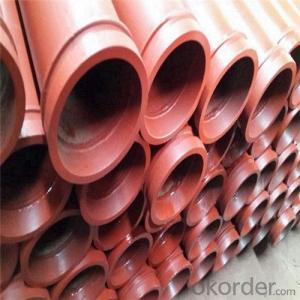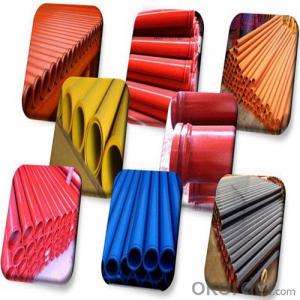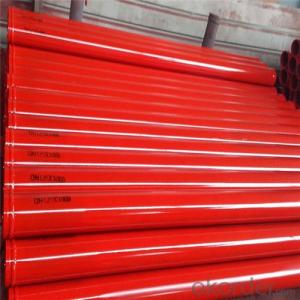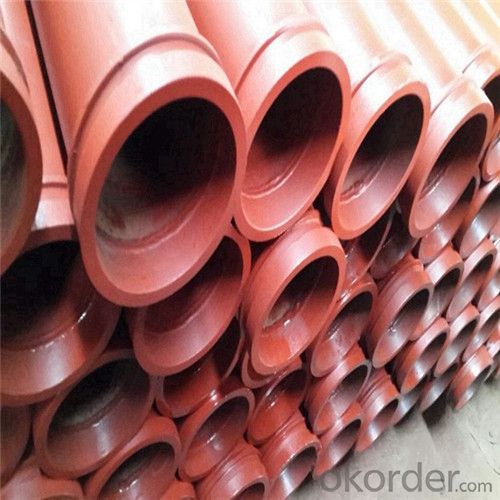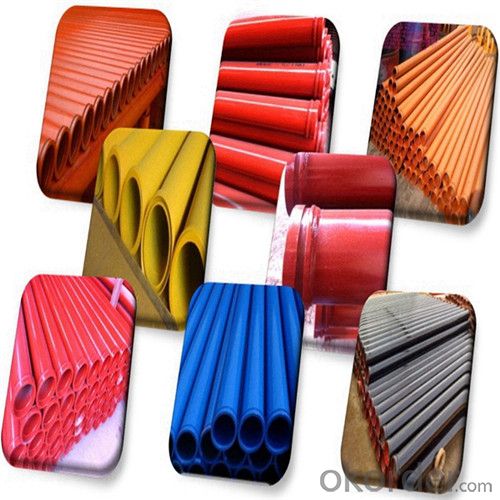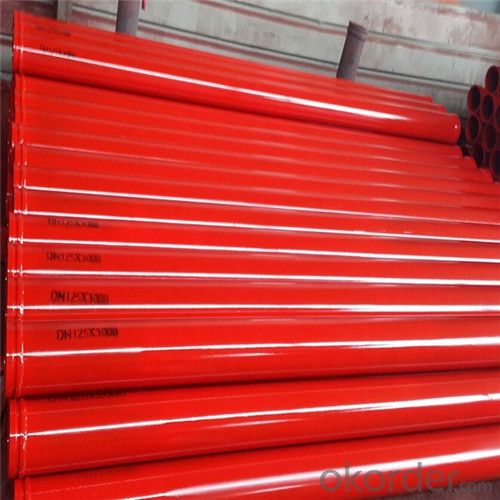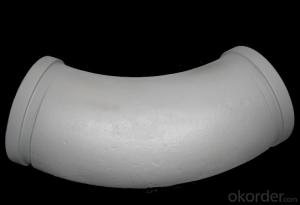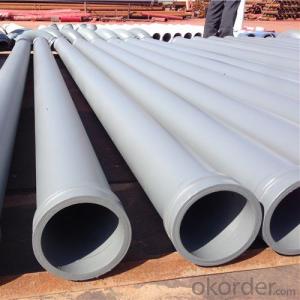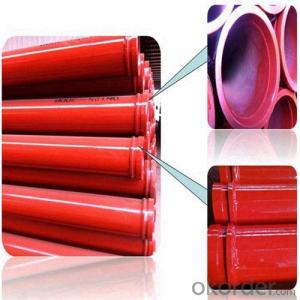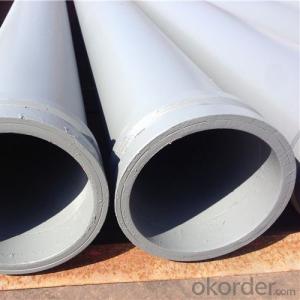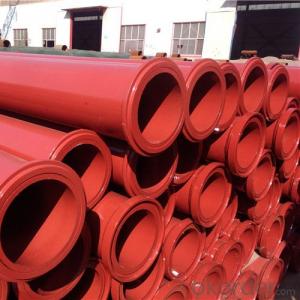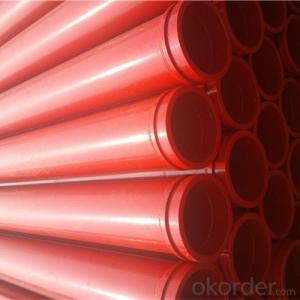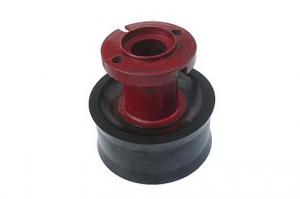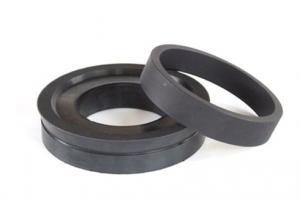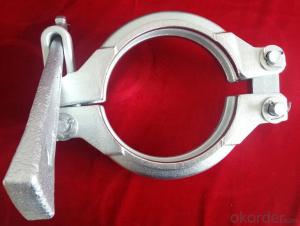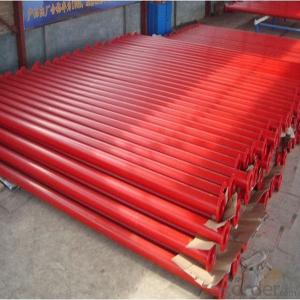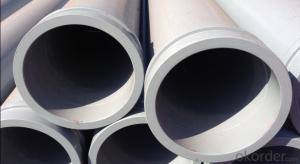3M Seamless Delivery Pipe for Putzmeister Concrete Pump
- Loading Port:
- Tianjin
- Payment Terms:
- TT or LC
- Min Order Qty:
- 50 pc
- Supply Capability:
- 5000 pc/month
OKorder Service Pledge
OKorder Financial Service
You Might Also Like
3M Seamless Delivery Pipe for Putzmeister Concrete Pump
1. Structure of 3M Seamless Delivery Pipe for Putzmeister Concrete Pump:
St52 Weld Pipe: Main use for Trailer-mounted pump, thickness has 4.0mm, 4.5mm, 5mm. Compare with for Truck-mounted pump. Weld pipe has cheaper price, so it is popular in Saudi, Pakistan, India, etc. Unit Price is about 30USD-33USD.
St52 Seamless Pipe: Now More People like use this kind for Truck Pump and Trailer Pump because of the quality is better and it is seamless kind, so this kind pipe is most popular in Middle East Price About 34USD-37USD.
Wear Resistant Pipe: Use for Truck Pump, Wear Resistant Layer is 2.5mm.Through heat treatment way make this pipe more strong (HRC60-62), Using Life: 25,000m³-35,000m³ Price about 65USD-68USD.
Two Wall Pipe: This pipe thickness (2mm+2.5mm), Using Life about 50,000m³-60,000m³
2. Main Features of 3M Seamless Delivery Pipe for Putzmeister Concrete Pump:
• High Wear-resistant, long service life, lower cost
• In case of quality problem the company provide free replacement.
• Provide technical support for free.
• Provide consumers with regular visits
• Ensure the supply of ancillary parts
• Our company passed the ISO9000 certification, the product through 3C certification in full compliance with national standards
3. 3M Seamless Delivery Pipe for Putzmeister Concrete Pump Images
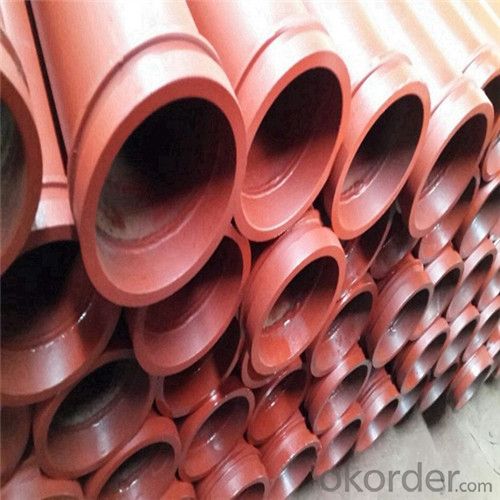
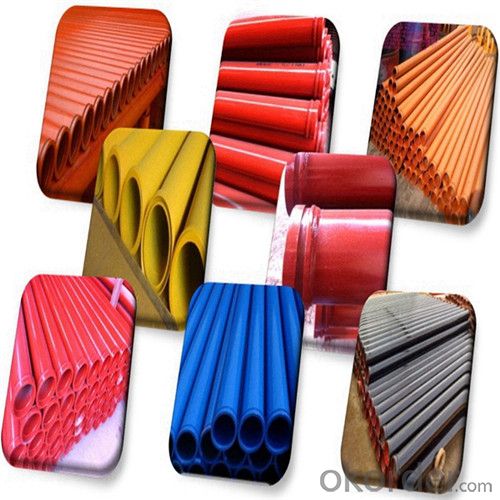
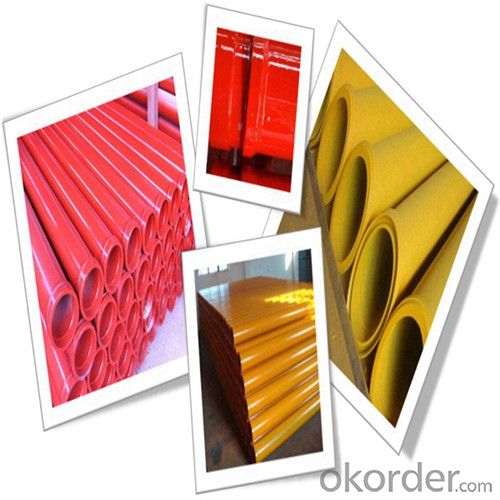
4. 3M Seamless Delivery Pipe for Putzmeister Concrete Pump Specification
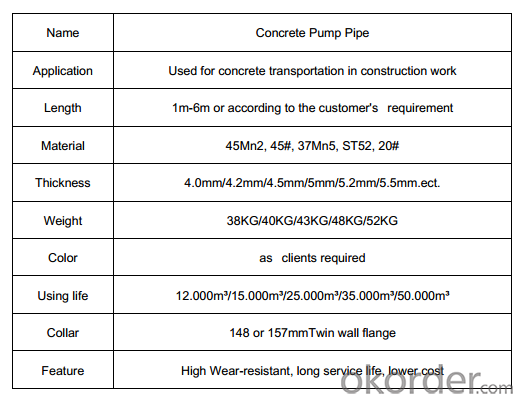
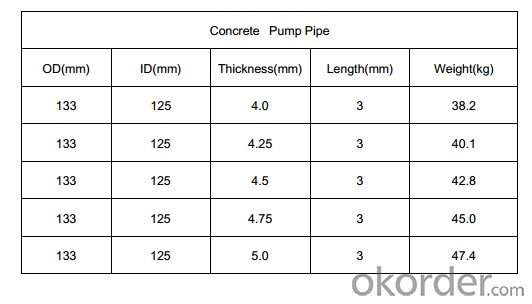
Production Process
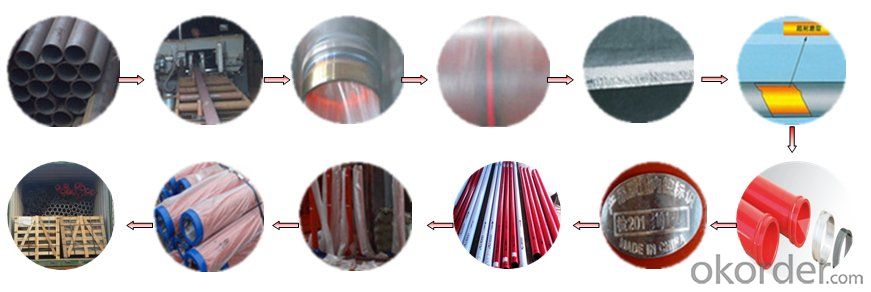
5. FAQ
We have organized several common questions for our clients, may help you sincerely:
①Is your products exported a lot?
We have exported to many, many countries. Every year we ship more than 30 containers of these spare parts. Our main market is in Middle-east, Asia & Africa.
②How to guarantee the quality of the products?
We have established the international advanced quality management system,every link from raw material to final product we have strict quality test;We resolutely put an end to unqualified products flowing into the market. At the same time, we will provide necessary follow-up service assurance.
③How long can we receive the product after purchase?
In the purchase of product within three working days, we will arrange the factory delivery as soon as possible. The specific time of receiving is related to the state and position of customers. Commonly 15 working days can be served.
6. Why choose us
• We are a comprehensive manufacturing and trading company.
• Our company is one of the biggest manufacturing and trading companies in China.
• We have been specialized in producing concrete pump spare parts and specialized in producing all kinds of concrete pump parts. As Concrete Pump Pipe, Concrete Pump Elbow, Concrete Pump Rubber Hose, Concrete Pump Wear Plate, Concrete Pump S Valve, Concrete Pump Piston and so on.
• We are famous for our superior quality, competitive prices, first-class craftworks, safe package and prompt delivery.
• We have been supplying concrete pump parts for SCHWING, PUTZMEISTER, SANY, CIFA, KYOKUTO, ZOOMLION for 10 years, so we can promise you the quality and best price.
- Q: How do I properly maintain and replace hydraulic hoses in concrete pump spare parts?
- To ensure the smooth functioning and longevity of your equipment, it is crucial to properly maintain and replace hydraulic hoses in concrete pump spare parts. Here are some effective steps you can take: 1. Conduct regular visual inspections to identify any signs of wear, damage, or leaks. Look for bulges, cracks, abrasions, or fraying. Pay attention to fittings, connections, and bends in the hose. 2. Implement a preventive maintenance schedule to reduce the chances of unexpected hose failure. Clean the hoses regularly to remove dirt, debris, and concrete residues that may cause abrasion or clogging. Use a mild detergent and water, and ensure thorough drying. 3. Store hydraulic hoses in a clean, dry, and temperature-controlled environment when not in use. Protect them from direct sunlight, extreme temperatures, and chemicals to avoid degradation. 4. Handle hydraulic hoses with care to prevent damage. Avoid dragging them on rough surfaces or sharp edges that can cause cuts or abrasions. Minimize excessive kinking or twisting, as it weakens the internal structure. 5. Replace hydraulic hoses promptly upon noticing signs of wear, damage, or leaks. Do not wait for hose failure, as it can lead to costly downtime and safety hazards. Follow the manufacturer's recommendations for replacement intervals. 6. Use high-quality replacement hoses that are compatible with your concrete pump. Choose hoses that meet industry standards and specifications for durability in concrete pumping conditions. 7. Properly install replacement hoses, ensuring correct routing and secure connections to fittings. Use appropriate tools and techniques to tighten fittings, avoiding over-tightening that can damage the hose or fittings. 8. Provide regular training to your staff on proper maintenance, inspection, and replacement procedures for hydraulic hoses. This will enhance their knowledge and skills, reducing the risks of improper handling or installation. By following these steps, you can effectively maintain and replace hydraulic hoses in concrete pump spare parts, ensuring the safety and efficiency of your equipment. Always refer to the manufacturer's guidelines and seek professional assistance when needed.
- Q: How does a hydraulic oil cooler maintain optimal temperature in a concrete pump?
- A hydraulic oil cooler in a concrete pump helps maintain optimal temperature by dissipating heat generated during the hydraulic system operation. It typically consists of a heat exchanger that uses air or water to cool down the hydraulic oil. As the oil circulates through the cooler, the excess heat is transferred to the surrounding air or water, ensuring that the oil stays within the recommended temperature range. This prevents overheating and helps to maintain the efficiency and longevity of the hydraulic system in the concrete pump.
- Q: How can a damaged concrete pump hopper affect the pumping process?
- A damaged concrete pump hopper can have several negative impacts on the pumping process. Firstly, a damaged hopper can lead to a decrease in efficiency and productivity. The hopper is responsible for holding and feeding the concrete mixture into the pump, and any damage to it can result in a disruption of the continuous flow of concrete. This can lead to frequent interruptions in the pumping process, causing delays and reducing the overall output of the pump. Secondly, a damaged hopper can affect the quality of the concrete being pumped. The hopper is designed to ensure proper mixing and consistency of the concrete mixture before it is pumped. If the hopper is damaged, it may not be able to effectively mix the concrete, leading to inconsistencies in the mixture. This can result in poor-quality concrete being pumped, which can compromise the structural integrity and durability of the final product. Moreover, a damaged hopper can pose safety risks for the workers involved in the pumping process. A damaged hopper may have sharp edges or loose parts that can cause injury if not properly addressed. Additionally, if the hopper is not functioning properly, it may lead to clogs or blockages in the pump, which can cause pressure build-up and potential accidents. Lastly, a damaged hopper can increase maintenance and repair costs. A hopper that is not in optimal condition may require frequent repairs or even replacement, which can be costly in terms of time and money. Regular maintenance and inspection of the hopper is crucial to identify any damages early on and prevent them from escalating into more significant issues. In conclusion, a damaged concrete pump hopper can significantly affect the pumping process by reducing efficiency, compromising the quality of the concrete, posing safety risks, and increasing maintenance costs. Regular inspection, maintenance, and timely repairs are essential to ensure the smooth operation of the pump and the delivery of high-quality concrete.
- Q: How does a hopper vibrator prevent concrete blockages?
- A hopper vibrator prevents concrete blockages by vibrating the hopper, which helps to dislodge any stuck or compacted material, allowing it to flow freely through the hopper and preventing blockages.
- Q: How can one determine the correct size and dimensions of concrete pump spare parts?
- To determine the correct size and dimensions of concrete pump spare parts, there are several important steps to follow: 1. Identify the specific make and model of your concrete pump: Each concrete pump has its own unique specifications and requirements for spare parts. Therefore, it is crucial to know the make and model of your pump before ordering any spare parts. 2. Consult the manufacturer's documentation: Manufacturers often provide detailed documentation that includes information on the required size and dimensions of spare parts. This documentation may include technical drawings, diagrams, and part numbers that can help you find the correct size. 3. Measure the existing spare part: If you already have a spare part that needs replacement, you can measure its size and dimensions using precision tools like calipers or a measuring tape. Take accurate measurements of key dimensions such as length, width, height, and any other relevant specifications. 4. Seek professional assistance: If you are unsure about the correct size and dimensions, it is advisable to consult with a professional or an authorized dealer. They have expertise in concrete pumps and can guide you in selecting the right spare parts based on your pump's specifications. 5. Consider compatibility and quality: When purchasing spare parts, ensure they are compatible with your concrete pump's make and model. Additionally, prioritize quality to ensure longevity and optimal performance. Buying from reputable suppliers or directly from the manufacturer can help ensure the spare parts meet the necessary size, dimensions, and quality standards. By following these steps, you can accurately determine the correct size and dimensions of concrete pump spare parts, ensuring smooth operation and minimizing downtime.
- Q: How often should concrete pump booms be inspected and maintained?
- Concrete pump booms should be inspected and maintained regularly to ensure safe and efficient operation. The frequency of inspections and maintenance will depend on the usage and working conditions of the concrete pump boom. Generally, it is recommended to inspect and maintain the boom at least once every month or after every 250 pumping hours, whichever comes first. During these inspections, it is important to check for any signs of wear and tear, damage, or malfunctioning parts. The boom's hydraulic system, including the hoses, cylinders, and valves, should be thoroughly inspected and tested for any leaks, blockages, or malfunctions. The boom's structural integrity, including the main boom, articulation points, and outriggers, should also be inspected for any cracks, deformations, or signs of stress. Regular maintenance of the concrete pump boom should include cleaning and lubricating all movable parts, checking and adjusting the tension of the cables, belts, and chains, as well as inspecting and replacing any worn-out or damaged components. The boom's electrical and control systems should also be inspected and tested to ensure proper functioning. In addition to regular inspections and maintenance, it is crucial to follow the manufacturer's guidelines and recommendations for specific maintenance intervals and procedures. It may be necessary to perform more frequent inspections and maintenance if the concrete pump boom is subjected to heavy usage, harsh working conditions, or if there are any significant changes in the performance or operation of the boom. By conducting regular inspections and maintenance, concrete pump boom owners can minimize the risk of accidents, prolong the lifespan of the equipment, and ensure that it operates at its optimal performance level. It is always advisable to consult with the manufacturer or a qualified professional to determine the most appropriate inspection and maintenance schedule for a specific concrete pump boom.
- Q: What are some common issues with concrete pump hoses and how can they be prevented?
- Some common issues with concrete pump hoses include hose blockages, hose leaks, and premature hose wear. These issues can be prevented by following proper maintenance and usage practices. 1. Hose Blockages: Concrete pump hoses can become blocked due to hardened concrete or debris. To prevent blockages, it is important to clean the hoses thoroughly after each use. Flushing the hoses with water or using a cleaning sponge ball can help remove any residue or build-up. Additionally, using the correct size and length of hose for the job can minimize the risk of blockages. 2. Hose Leaks: Leaks can occur due to wear and tear, improper connections, or damage to the hose. Regular inspection of the hoses is crucial to identify any signs of leakage. If any leaks are detected, they should be promptly repaired or replaced. Properly connecting and securing the hose fittings can also prevent leaks. 3. Premature Hose Wear: Concrete pump hoses can wear out over time due to factors like abrasion, bending, and exposure to harsh chemicals. To prevent premature wear, it is important to handle the hoses with care and avoid dragging them on rough surfaces. Using protective sleeves or guards can also provide additional protection against abrasion. Regularly inspecting the hoses for signs of wear and replacing them when necessary is essential. 4. Improper Storage: Improper storage of concrete pump hoses can lead to damage and reduce their lifespan. Hoses should be stored in a clean and dry environment, away from direct sunlight and extreme temperatures. Coiling the hoses properly and avoiding sharp bends or kinks can help maintain their integrity. 5. Incorrect Pressure: Exceeding the recommended pressure limits can cause the hose to burst or fail. It is important to ensure that the concrete pump is operated within the specified pressure range. Regularly inspecting the pressure gauges and monitoring the pumping process can help prevent over-pressurization. By following these preventive measures and conducting regular inspections and maintenance, the common issues associated with concrete pump hoses can be minimized, leading to improved performance and longevity of the hoses.
- Q: What is the purpose of a concrete pump control panel?
- The purpose of a concrete pump control panel is to provide operators with a centralized platform to control and monitor the various functions of a concrete pump. It allows them to adjust the pumping rate, control the direction and flow of the concrete, monitor the pressure levels, and ensure the safe and efficient operation of the machine.
- Q: What is the importance of a good quality concrete pump seal?
- There are several reasons why a high-quality concrete pump seal is of utmost importance. Firstly, it guarantees the efficient and dependable operation of the concrete pump. The seal's main responsibility is to prevent any leakage or loss of pressure during the pumping process, which can cause delays, inefficiencies, and even damage to the pump itself. Furthermore, a top-notch seal helps to maintain the integrity of the concrete being pumped. Concrete is composed of various materials, including water, cement, aggregates, and additives. To achieve the desired strength and durability, it is essential that the concrete remains in its optimal state without any contamination or dilution. A superior seal effectively blocks any external elements, such as water or air, from entering the pumping system and affecting the composition of the concrete. Moreover, a reliable seal contributes to the safety of the pumping operation. Construction sites often utilize concrete pumps, where workers and equipment are present. Any failure or malfunction of the seal can result in unexpected incidents, injuries, or damage to property. Therefore, investing in a high-quality seal provides peace of mind and reduces the risk of accidents. Lastly, investing in a top-quality concrete pump seal can lead to significant time and cost savings in the long run. A durable and efficient seal minimizes the need for frequent replacements or repairs, reducing maintenance costs and downtime. It also ensures a smooth and uninterrupted pumping process, allowing construction projects to be completed more efficiently and on schedule. In conclusion, prioritizing the selection and installation of a reliable concrete pump seal is crucial for ensuring the efficient operation, integrity of the concrete, safety, and cost-effectiveness of a pumping project. Therefore, it is essential to give utmost importance to choosing a high-quality seal to guarantee the success and longevity of concrete pumping projects.
- Q: How do I properly maintain and replace wear plates in concrete pump spare parts?
- Proper maintenance and replacement of wear plates in concrete pump spare parts involves regular inspection, cleaning, and timely replacement. Firstly, inspect the wear plates regularly for any signs of wear, cracks, or damage. Clean them thoroughly to remove any debris or hardened concrete buildup. If the wear plates are worn out or damaged beyond repair, they should be replaced immediately to ensure optimal performance and prevent further damage to the pump. It is crucial to use high-quality replacement wear plates that are specifically designed for your concrete pump model. Following the manufacturer's guidelines and seeking professional assistance when needed will help ensure the proper maintenance and replacement of wear plates in concrete pump spare parts.
Send your message to us
3M Seamless Delivery Pipe for Putzmeister Concrete Pump
- Loading Port:
- Tianjin
- Payment Terms:
- TT or LC
- Min Order Qty:
- 50 pc
- Supply Capability:
- 5000 pc/month
OKorder Service Pledge
OKorder Financial Service
Similar products
Hot products
Hot Searches
Related keywords
